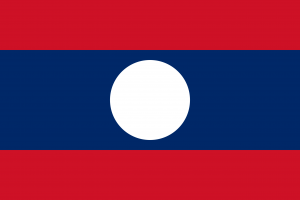Difference between revisions of "Language/Lao/Grammar/Plurals"
m (Quick edit) |
m (Quick edit) |
||
| Line 127: | Line 127: | ||
{{Lao-Page-Bottom}} | {{Lao-Page-Bottom}} | ||
<span links></span> | <span links></span> | ||
{{Lao-0-to-A1-Course-TOC}} | |||
[[Category:Course]] | |||
[[Category:Lao-Course]] | |||
[[Category:0-to-A1-Course]] | |||
[[Category:Lao-0-to-A1-Course]] | |||
Revision as of 18:35, 31 March 2023
Hi Lao learners! 😊
In this lesson, we will discuss plurals in the Lao language. This is an important aspect of grammar that will help you sound more fluent and natural in your speech. By the end of this lesson, you will be able to form plurals and use them correctly in your conversations. So let's get started!
Introduction
In Lao grammar, you can form plurals by either adding a particle after the noun or by using classifiers, which are similar to counters in other languages. The choice of method depends on the noun's meaning and context. Unlike in English, Lao plurals do not change the noun's form, so there is no need to worry about adding -s or -es to the end of a word.
Once you've mastered this lesson, take a look at these related pages: Personal pronouns, Negation, Give your Opinion & Demonstrative Pronouns.
Particle-based Plurals
In Lao, you can add the particle 'ປະ-' (pa) after the noun to make it plural. For example:
| Lao | Pronunciation | English |
|---|---|---|
| ນັ້ນ | nǭn | dog |
| ປະນັ້ນ | pa nǭn | dogs |
| ພະຍາຣາຕະນາກ | pa ya ra ra ta na k | universities |
| ຫ້າມຫຍ້ອງ | hǎm nyǭng | mango |
| ປະເຫມືອງ | pa mǣung | mangoes |
Notice that the particle 'ປະ-' (pa) comes before the noun and changes its meaning to plural. However, it is essential to remember that not all nouns can take this particle, and some have different plural forms.
Exceptions
Some nouns have irregular plural forms and do not use the particle 'ປະ-' (pa). For example:
| Lao | Pronunciation | English | |||||||||
|---|---|---|---|---|---|---|---|---|---|---|---|
| ຊາ | sǎa | cow | ຊາເສລີ | sǎa sǭ̂lǐ | cows | ກະດີ | kadǐ | plate | ກຸ່ມຂອງກະດີ | kǔm khǭng kadǐ | plates |
In these cases, you have to memorize the plural form since it does not follow the standard pattern.
Classifier-based Plurals
The second method for forming plurals in Lao involves the use of classifiers, which are also called measure words. Classifiers are necessary when you refer to a specific quantity or type of noun, which is common in everyday conversations. They follow the noun and come before the verb or adjective of the sentence.
For example, when talking about cups of coffee, you would use the classifier 'ຈັນ' (chan) for cups and 'ຈີນ' (jin) for coffee. The noun 'ເຄື່ອງກະສຸກ' (khēung kasuk) means 'coffee cup' but when you want to indicate two cups you can use 'ຈັນ' (chan) next to the number two, and 'ຈີນ' (jin) after the noun 'ເຄື່ອງກະສຸກ' (khēung kasuk) similar to this،
ເຄື່ອງກະສຸກຈັນ2ຈີນ
This indicates "two coffee cups".
Here are more examples:
| Lao | Pronunciation | English |
|---|---|---|
| ເຕີ້ນດີ | tǭen di | one pillow |
| ບອກຕີ້ນດີຈັນ | bǭk tǭen di chan | one pillowcase |
| ລົງມະຫານ | long ma han | one bottle |
| ລົງຈັນມະຫານ | long chan ma han | one bottle |
Notice that the classifier 'ຈັນ' (chan) is used for pillowcases, while the classifier 'ມັນ' (man) is used for bottles. Some classifiers can be used for multiple nouns, while others are specific to a particular type of object.
Dialogue
To help you understand plurals better, here's a dialogue:
- Person 1: ຮັກປະມານດີ (hǎk pa mǎn di) (How many mangoes do you want?)
- Person 2: ຂໍ້ມູນຫຍັງຈຳນວນສູງສຸດ (khǭn mư̄ n jammaw nu sǔ) (Information about the exact amount)
- Person 1: ມັນເປັນໜ້ອຍສອງ (man pen nǭi song) (It is twelve)
- Person 2: ພວກເຮົາຕ້ອງການເກັບນຳກ່ຽວກັບເພີມ (phư̄akhǭra tǭng kān kǭ́ yūn khīo keuang phēm) (We need to talk about adding more)
As you can see in the dialogue, Person 1 uses the classifier 'ມັນ' (man) for "twelve," while Person 2 responds with a phrase that does not reference a specific number or classifier.
Plurals in Lao Culture
Lao culture has a rich tradition of storytelling, poetry, and music, where the Lao language plays a crucial role. Many traditional Lao proverbs use the plural form to express general truths about life, such as: "ລູກຄ້າໝົດຖ້ວນກັນມີເສລະການ" (lǔk kǎ mǭ̀ tjǭ̂ nǭi mī sǭ̂lǐ kasuk kān) which means "A good customer has many plates to wash."
Additionally, Lao people use plural nouns in their everyday conversations to express politeness and respect. For example, when addressing a group of people, one might use the plural pronoun ວຽກ (wǭ̄ɔk) instead of the singular pronoun ຂ້າພະເຈົ້າ (kā phachao). This is done intentionally to indicate that the speaker values the group's presence and does not wish to exclude anyone.
Conclusion
In conclusion, plurals are an essential aspect of Lao grammar that will undoubtedly improve your fluency and accuracy in the language. By using particle-based plurals and classifier-based plurals, you can describe quantities and objects accurately in your speech. You can also appreciate the cultural importance of plurals and how they reflect aspects of Lao society in your conversations. So keep practicing and soon you'll see your Lao skills skyrocket!
➡ If you have any questions, please ask them in the comments section below.
➡ Feel free to edit this wiki page if you think it can be improved. 😎
Sources
- Lao grammar - Wikipedia
- Lao Definition & Meaning - Merriam-Webster
- The Most Common Problems Students in Laos Face When Learning ...
Well done on mastering this lesson! Don't miss these related pages to expand your knowledge: Adjectives, Pronouns, Future Tense & Conditional Mood.
Other Lessons
- Personal pronouns
- Give your Opinion
- Pronouns
- Questions
- How to Use Have
- Adjectives
- Future Tense
- Negation
- How to Use Be
